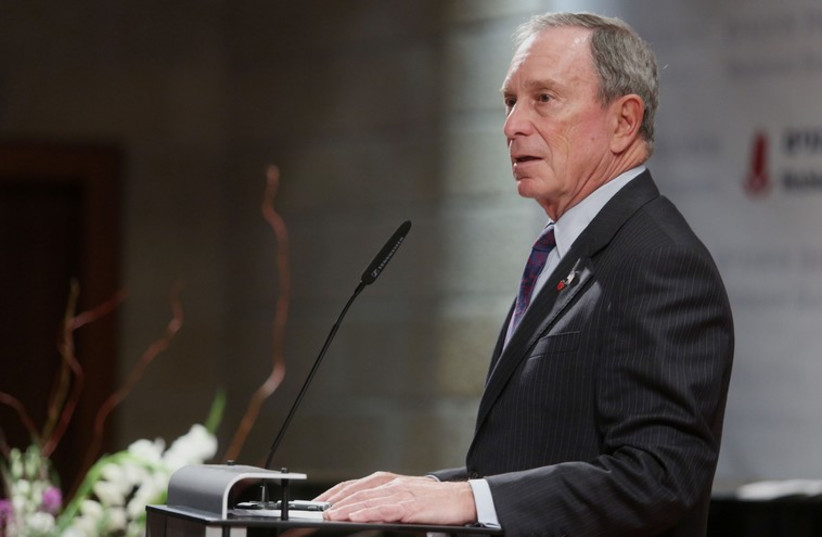Five years ago, we launched the Mortimer B. Zuckerman STEM leadership program to propel applied science forward and solidify scientific cooperation between Israel and the United States. In these years, as the program’s impact has been felt in Israel and worldwide, the vital role universities play in their communities has become even more pronounced.
Undoubtedly, universities are expanding to help tackle some of society’s greatest challenges – COVID-19, climate, transportation, security and defense, health care, poverty, and more. In so doing, we are seeing universities grow their physical footprint to give themselves an opportunity to compete for the best students and academics in desirable locations, often in urban areas.
As Israeli universities follow this trend, there are some salient examples from academic expansion in the US Growth can have a powerful impact on communities if done with intention and purpose, and academic institutions are best served when they think about themselves within the context of the larger communities in which they exist.
A good example is the addition of the Cornell Tech campus to the New York City landscape. Fourteen years ago, as the financial collapse of 2008-2009 shook the world to its core, New York City was particularly affected as financial institutions had been playing an outsized role in the New York economy, particularly the job market.
To respond to this crisis, New York City, under mayor Michael Bloomberg, undertook an in-depth analysis to determine how to diversify its economic base and identify those industries that could help New York City rebound and transform into a very different looking future. The result was an investment in a university campus dedicated to applied sciences. In 2011, New York City, Cornell University and Technion-Israel Institute of Technology announced a partnership to build a $2 billion, two million-square-foot applied science and engineering campus on Roosevelt Island in New York City.
 Michael Bloomberg (credit: MARC ISRAEL SELLEM/THE JERUSALEM POST)
Michael Bloomberg (credit: MARC ISRAEL SELLEM/THE JERUSALEM POST)Cornell Tech’s development has been foundational in several ways. First, it views the 14,000 residents of its Roosevelt Island home as neighbors and aims to broadly apply the expertise and resources of Cornell University for lasting impact on the Roosevelt Island community. Second, Cornell Tech demonstrates the importance of collaboration and knowledge sharing with its access to New York’s diverse and dynamic technology, business, and cultural environments. Over time, Cornell Tech will add $30 billion in economic development to the New York ecosystem.
A second example is the integration of Columbia University into the Manhattanville community, as well as the growth of life sciences as a key component of the university’s world-class offerings. Columbia’s Morningside Heights campus is stunningly beautiful. It is a traditionally designed academic environment – cobblestone pathways leading into a quad with academic buildings surrounding it. But the stone walls and the iron gates cut off the campus from the rest of the community. With the need to expand, the university saw an opportunity to chip away at that ivory tower.
Today, Columbia has embraced the broader community to improve lives and the educational experience. The concerns that residents of the neighborhoods around Columbia had about the university’s expansion have slowly decreased, thanks in part to a community benefits agreement among New York State, New York City and Columbia University to ensure that the university’s strategic real estate growth plan works in conjunction with the community.
Interestingly, the first building to open as part of the new Manhattanville campus was the Jerome Greene Science Center which houses the Zuckerman Mind Brain Behavior Institute. The sustainably designed campus has no gates and no stone walls. In fact, most of the facilities have glass façades on the ground floor that welcome the community.
A final example is how New York State has leveraged its partnership with the State University of New York – or SUNY – the largest comprehensive university system in the United States. With the help of SUNY, New York State is empowering business and creating a deeper knowledge-based economy. This industry-academic partnership is transforming cities and towns in Upstate New York.
By attracting the manufacturing company Cree/Wolfspeed to build a $1 billion chip fabrication plant in the Utica suburb of Marcy, for example, the state created over 600 high-paying jobs. But for the deal to happen, Cree/Wolfspeed used the SUNY Polytechnic Institute’s Marcy campus to make silicon carbide chips while also employing an existing wafer line at SUNY Poly’s Albany campus that was upgraded to make the commercial chips until the Utica fab was completed.
Bottom line: Cree’s investment has been a game-changer for Utica, as this funding, along with other investments in chip building in the Mohawk Valley, is growing the town’s downtown and other main corridors. Now, Upstate New York has become a tech hub for advanced silicon chips because of the collaboration and synergies between industry and university campuses.
The strategic investments in Cornell Tech, Columbia-Manhattanville and academic-industry partnerships are having the intended effect of transforming areas of New York and New York City into vibrant 21st-century economies.
Israeli universities would do well to keep these examples in mind as they continue to expand to tackle some of the world’s most intractable challenges and provide the next generation of students the best possible educational experience while benefiting their neighborhoods.
Eric J. Gertler is a trustee of the Zuckerman Institute and a former President & CEO of Empire State Development in New York State, the state’s principal economic development agency. This article is excerpted from a speech Gertler gave at Tel Aviv University in May 2022.